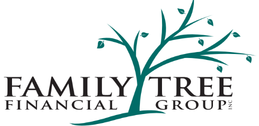
Taxes and Your Retirement Income: Key Principles to Discuss with Your Advisor
Retirement income planning isn’t a sprint, it’s a marathon. A coordinated approach with your financial advisor can help ensure your income lasts, your taxes stay optimized, and your peace of mind remains intact.
When it comes to drawing income in retirement, the order and where that income comes from can have a big impact on your after-tax results.
Below are some of the key principles every retiree should consider:
1. Be Mindful of Income Thresholds
Government programs and credits (like Old Age Security (OAS) or the Age Amount) can be clawed back if your income crosses specific thresholds. Strategic income planning can help you stay below those limits when it makes sense to do so.
2. Manage Your Tax Brackets
Retirement income often comes from multiple sources. By managing the timing and size of withdrawals, you can avoid unnecessary jumps into higher tax brackets.
3. Think Long-Term
A small difference in tax efficiency today can compound into major benefits down the road. The goal isn’t just minimizing taxes this year; it’s building a sustainable strategy for your entire retirement horizon.
4. Know How Each Type of Income Is Taxed
Not all income is created equal. Here’s a quick refresher:
- Interest income: fully taxable at your marginal rate
- Dividends: eligible for a dividend tax credit
- Capital gains: only 50% is taxable
- Foreign income: (typically) fully taxable, may include foreign tax credits
- RRSP/RRIF withdrawals: fully taxable when withdrawn
Understanding these differences helps you and your advisor decide which accounts to draw from first.
5. Canada Pension Plan (CPP) Timing Matters
Your decision on when to start CPP, as early as 60 or as late as 70, can affect both your income security and your tax situation. It’s worth modeling different start ages to find the right fit for your lifestyle and tax bracket.
6. Pay Attention to Your Investment Containers
Where you hold your investments can be just as important as what you hold. The account type (RRSP, TFSA, non-registered, corporate account) and the investment’s tax characteristics (dividends, interest, capital gains) should align with your income strategy.
7. Keep An Eye on Your Net Income (Line 23600)
On your tax return, many government benefits and credits are based on your net income (line 23600). Monitoring this number each year helps you and your advisor fine-tune your withdrawal and investment strategy.
Summary
Tax-efficient retirement income planning is about balance, balancing your cash flow needs today with your future tax position. With thoughtful coordination between your financial advisor and tax professional, you can keep more of what you’ve earned working for you throughout retirement.
Source: https://www.taxtips.ca/taxrates/bc.htm


